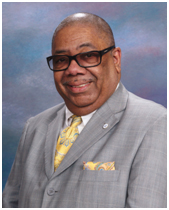
By Rev. Donald L. Perryman, Ph.D.
The Truth Contributor
…the financial and social investment in prisons means that black and brown youth become, essentially, fodder for the machinery of capitalized incarceration.
– Michael Eric Dyson
Recent incidents in Toledo involving Brandon Upchurch and Erica Allen have reignited discussions on local police practices, emphasizing the urgent need for transparency and racial biases in the criminal justice system.
The NAACP’s call for an investigation after Toledo Police wrongly accused Upchurch of “stealing his own truck” and deployed a K-9 unit inappropriately has spotlighted the issue of excessive force.
Conversely, the lack of similar scrutiny following the tragic police shooting of Erica Allen, a 26-year-old mother who allegedly wounded her grandmother and threatened her children with a knife, underscores a disparity in response that hints at deeper systemic issues.
A significant aspect of the events is the absence of body camera footage, particularly when SWAT officers, who had just returned from training, fatally shot Allen. This gap in footage, due to officers not being equipped with body cameras, raises significant questions about the Toledo Police Department’s commitment to transparency and the prioritization of essential policing tools. It also suggests a need for a unified body camera policy that ensures cameras are as accessible and mandatory as other critical equipment, reducing the chances of them being overlooked during emergencies.
While I truly appreciate the urgency required in situations where children’s lives are at stake, as seen in the tragic events at Robb Elementary School in Uvalde, Texas. Police there were quick to arrive but then hesitated for nearly 77 minutes before acting to neutralize the shooter. This devastating delay resulted in the loss of 19 children and two teachers and has been widely criticized as a failure in both urgency and decision-making.
“In my view,” a veteran law enforcement officer explained, “when you arrive on the scene, the information available is limited, and the situation is chaotic. Decisions must be made swiftly in these circumstances—it’s tragic when lives are lost, but hesitating isn’t always an option. If you wait too long, the question becomes, ‘Why didn’t you act sooner?”
Yet, the most pressing question remains: Why is there no body cam footage, and why wasn’t it considered essential to the operation
Was it really just an oversight? Did the officers simply forget, or did they choose not to use the body cameras?
In any event, the consequences of forgetting should be severe. If neglecting to carry a firearm leads to disciplinary action, why doesn’t the same apply to body cams? Without proper accountability, what prevents such an oversight from happening repeatedly?
Following this, it’s also crucial to consider the logistics surrounding the use of body cameras. Where are these cameras stored in relation to other essential equipment? If officers need to go to a different location to retrieve them, how does this affect their availability during an emergency? In addition, questions arise about the prioritization of equipment: what gets picked up first and why? Furthermore, how many officers forgot their body cameras in the Allen incident, and who specifically are these officers? An officer’s history of forgetfulness or disciplinary actions could shed light on whether this is a recurring issue.
Indeed, these issues not only point to operational failures but also reflect broader societal challenges in how justice is meted out, particularly to communities of color. Such gaps in police practices emphasize the critical importance of transparency and accountability, which are fundamental to building and maintaining trust between law enforcement and the community.
Furthermore, the financial implications of the criminal justice system in Toledo also reflect broader systemic challenges.
In the U.S., over a million individuals depend on the criminal justice system for their livelihoods. Specifically, in Toledo, Ohio, the criminal justice system’s financial footprint is enormous, with annual economic impact exceeding $100 million. This substantial financial outlay feeds into a profit-oriented model, where spending leads to financial or economic returns for those able to tap into its financially rewarding system.
Recent quantitative data shows that despite reductions in the overall jail population, the percentage of Black and Brown individuals incarcerated remains disproportionately high, though.
As a result, Lucas County’s millions of dollars received from MacArthur grants, intended to address systemic injustices, have largely been funneled into expanding judicial infrastructure—more bailiffs, enhanced electronic monitoring, more salaries for system employees, and a technologically advanced jail—rather than into meaningful community engagement or preventive measures that will solve the equity problem.
These systemic and financial issues call for comprehensive reform in law enforcement practices. Priorities should include enhancing transparency, reevaluating the allocation of financial resources, and implementing community-focused initiatives that address mental health and prevent incarceration.
By focusing on these areas, Toledo can begin to dismantle the mechanisms of a justice system that too often conflates punishment with profit, thereby fostering a truly equitable approach to law enforcement and community relations.
Moreover, by focusing on equity, mental health, and preventative measures, Toledo can begin to dismantle the machinery of capitalized incarceration that Michael Eric Dyson critically highlights.
It is not just a time for change—it is a time for action and redirection towards a truly equitable justice system.
Contact Rev. Donald Perryman, PhD, at drdlperryman@centerofhopebaptist.org
